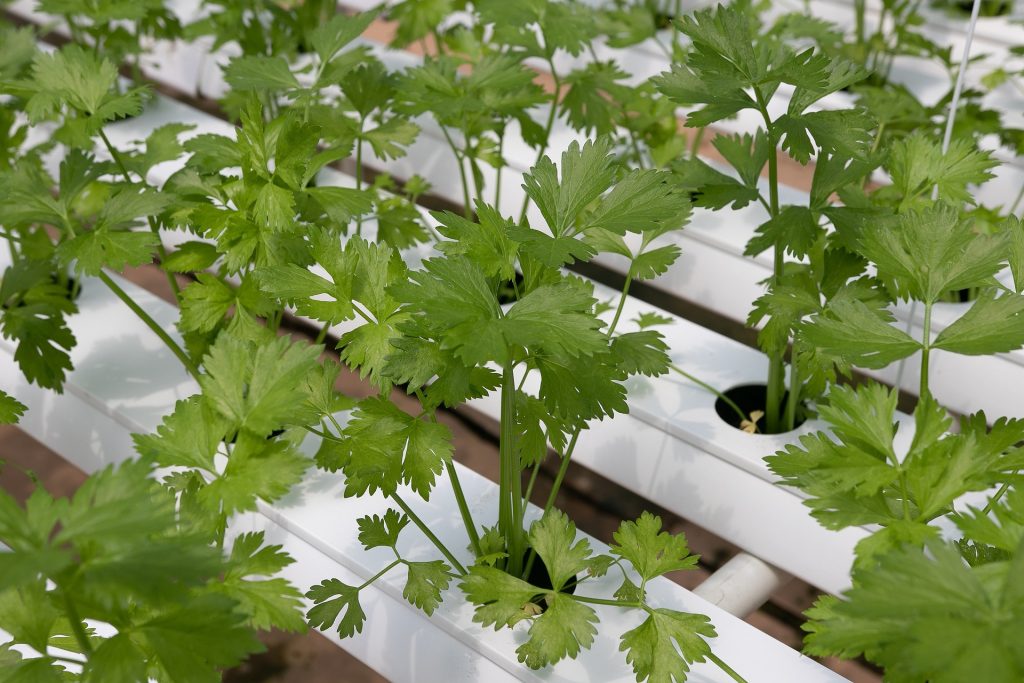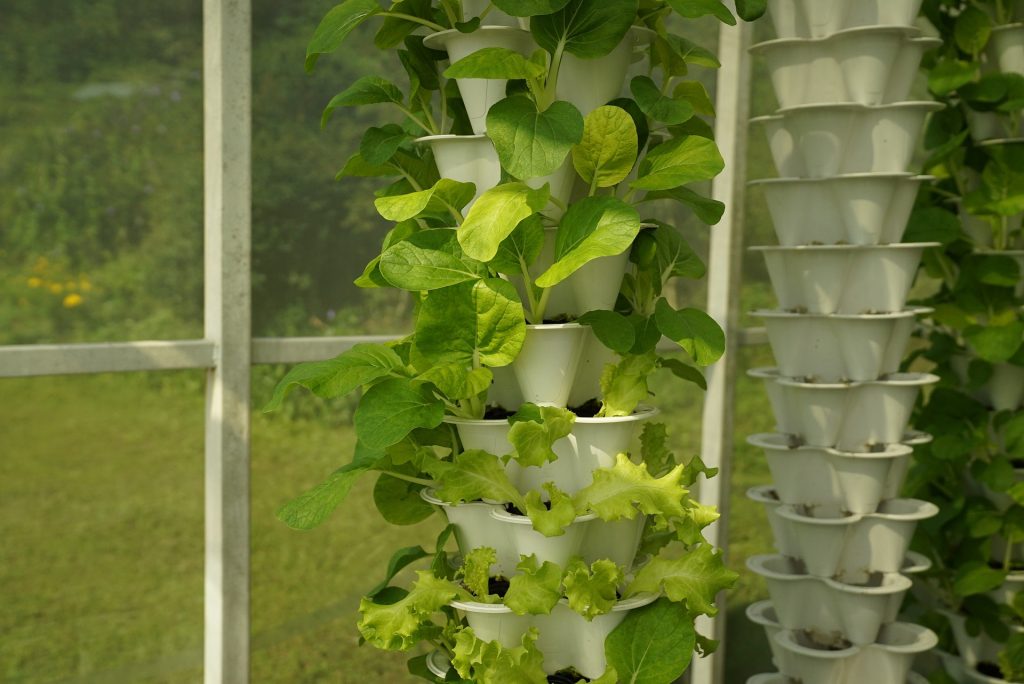How to Build Your Hydroponic Garden: Step-by-Step Instructions Are you interested in growing your fresh produce, but don’t have a lot of space or access to a traditional garden? Hydroponic gardening might be the solution you’ve been looking for!
Hydroponic gardening is a soil-less method of growing plants using nutrient-rich water instead.
The benefits of hydroponic gardening include higher yields, faster growth, and less maintenance compared to traditional gardening methods.
In this post, we’ll provide step-by-step instructions for building your hydroponic garden, so you can start growing your fresh fruits and vegetables at home.
Gather Your Materials
To build a hydroponic garden, you’ll need the following materials:
- A container or reservoir to hold the nutrient solution
- A growing medium, such as peat moss, perlite, or Rockwool
- The nutrient solution, which can be purchased or made from scratch using fertilizer salts and water
- Plants or seeds to grow in your hydroponic garden
- Lighting, if you don’t have access to natural sunlight
You may also need additional materials depending on the type of hydroponic system you choose to build, such as tubing, pumps, and air stones.
Choose Your Growing System
There are several different types of hydroponic growing systems to choose from, including:
- Deep water culture: plants are suspended in a nutrient solution with their roots submerged in water
- Nutrient film technique: a thin film of nutrient solution flows over the roots of the plants
- Drip irrigation: the nutrient solution is dripped onto the growing medium or roots of the plants at regular intervals
Each type of system has its pros and cons, depending on factors such as the type of plants you want to grow and your budget.
Consider the following when choosing a growing system:
- Space available: some systems take up more room than others
- Initial cost: some systems are more expensive to set up than others
- Maintenance required: some systems require more frequent monitoring and adjustments than others
We’ll go into more detail on each type of system and help you choose the best one for your needs and budget in the following sections.

Build Your Hydroponic Garden
Now that you’ve gathered your materials and chosen your growing system, it’s time to build your hydroponic garden! Here are the steps you’ll need to follow:
1. Prepare the Container
- Choose a container that is large enough to hold your plants and nutrient solution, and that has a lid or cover to prevent evaporation.
- Clean the container thoroughly to remove any dirt or debris.
- Drill holes in the lid or cover for the plants to grow through.
2. Set Up the Growing System
- Depending on the type of system you’ve chosen, you may need to set up the tubing, pumps, air stones, or other equipment.
- Follow the instructions that came with your system to set it up properly.
3. Add the Growing Medium
- Fill the container with your chosen growing medium, such as peat moss, perlite, or rock wool.
- Make sure the medium is evenly distributed and level.
4. Add the Plants and Nutrients Solution
- Place your plants or seeds into the growing medium, following the recommended spacing and depth for each type of plant.
- Mix your nutrient solution according to the instructions on the fertilizer package, and add it to the container.
- Monitor the pH and nutrient levels regularly and adjust as needed.
5. Provide Lighting and Airflow
- If you don’t have access to natural sunlight, you’ll need to provide artificial lighting for your plants.
Make sure the container has good airflow to prevent mold or mildew growth.
Congratulations! You’ve built your hydroponic garden. Now all that’s left to do is maintain it properly and watch your plants thrive.

Maintain Your Hydroponic Garden
Now that you’ve built your hydroponic garden, it’s important to maintain it properly to ensure healthy plant growth. Here are some tips to keep in mind:
1. Check pH and Nutrient Levels Regularly
- pH and nutrient levels are crucial to plant growth in hydroponic systems. Check them regularly and adjust as needed.
- pH should be between 5.5 and 6.5 for most plants, but check the recommended range for the specific plants you’re growing.
- Nutrient levels should be checked every week or two and adjusted as needed based on the growth stage of your plants.
2. Monitor Water Temperature
- The temperature of the nutrient solution can affect plant growth. Keep it between 65 and 75 degrees Fahrenheit for best results.
3. Prevent and Treat Common Problems
- Common problems in hydroponic systems include mold, algae, and root rot. Prevent these issues by maintaining good airflow and cleanliness, and avoiding overwatering.
- If you do encounter these problems, treat them quickly with appropriate solutions, such as hydrogen peroxide for root rot.
4. Prune and Harvest Plants Regularly
- Regular pruning and harvesting will keep your plants healthy and productive.
Remove dead or damaged leaves, and harvest fruits and vegetables when they’re ready.
By following these tips and guidelines, you’ll be able to maintain a healthy and productive hydroponic garden. Happy growing!
Harvest and Enjoy Your Hydroponic Plants
Congratulations, you’ve successfully grown your hydroponic plants! Here’s what you need to know to harvest and enjoy them:
1. Know When to Harvest
- Each type of plant will have its indicators for when it’s ready to harvest.
- For fruits and vegetables, look for color and size indicators, and gently tug on the product to see if it’s ready to be harvested.
- For herbs, wait until they reach their full height before harvesting the leaves.
2. Harvest Properly
- Use clean, sharp scissors or pruning shears to harvest your plants.
- Cut close to the base of the plant, but avoid cutting the main stem.
3. Store and Use Your Harvest
- Store your harvested plants in a cool, dry place to prevent spoilage.
- Herbs can be dried and stored in an airtight container.
- Fruits and vegetables can be used fresh or preserved through canning, freezing, or pickling.
- Enjoy the fruits of your labor by cooking with your fresh herbs, adding your homegrown fruits and vegetables to your favorite recipes, and sharing your harvest with friends and family.
With these tips, you’ll be able to harvest and enjoy your hydroponic plants in no time. Happy growing and harvesting!

Hydroponic gardening is a fun and rewarding way to grow your plants and vegetables without soil. By following the key steps outlined in this post, you can easily build and maintain your hydroponic garden.
To recap, the key steps for building and maintaining a hydroponic garden are:
- Gather Your Materials
- Choose Your Growing System
- Build Your Hydroponic Garden
- Maintain Your Hydroponic Garden
- Harvest and Enjoy Your Hydroponic Plants
We encourage you to try building your hydroponic garden and see the benefits for yourself. Not only is hydroponic gardening a fun and rewarding hobby, but it can also be a sustainable way to grow your food.
For further reading, there are many resources available online and in books on hydroponic gardening, including different types of growing systems, nutrient solutions, and plant varieties.
Some recommended resources include:
“The Joy of Hobby Hydroponics” by Richard Bray
“Hydroponic Gardening: The Magic of Modern Hydroponics for the Home Gardener” by Andy Jacobson
“The Ultimate Guide to Hydroponic Gardening: A Beginner’s Guide to Building a Hydroponic Garden” by Timothy Tripp
We hope this post has provided you with the information and inspiration you need to build your hydroponic garden. Happy gardening!